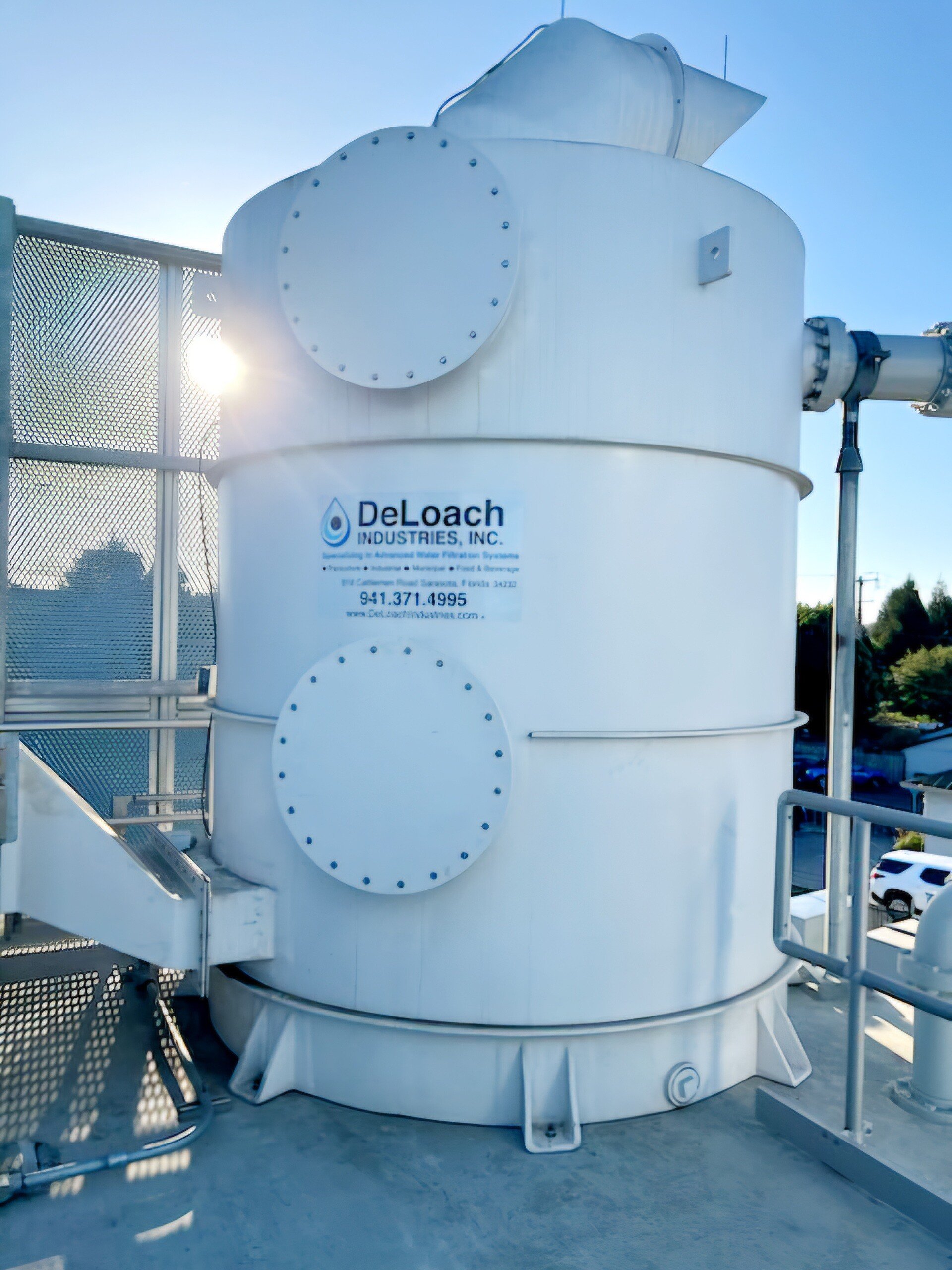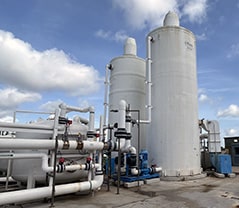How Forced Draft Degasification Systems Work
Forced Draft Degasification (FDD) systems are at the forefront of industrial water purification technology and are designed to remove dissolved gases, such as carbon dioxide and hydrogen sulfide, from water, significantly improving water quality and reducing the risk of corrosion in industrial equipment. The process starts in a vertically designed tower where water flows downward, encountering a cross-current airflow. This setup allows the unwanted gases to be stripped away efficiently, ensuring that the water exiting the system is free of these contaminants.
Read More
Topics:
degasification,
degasifier,
DeLoach Industries, Inc.,
Forced Draft,
Industrial water treatment
Water purification is critical in industrial operations, especially when it comes to removing dissolved gases that can cause corrosion and compromise the efficiency of equipment. Various methods exist to address these issues, with Forced Draft Degasification (FDD) systems often cited as one of the best options. However, while FDD systems have clear advantages, they may not always be the ideal solution depending on specific needs. In this article, we'll explore the ins and outs of Forced Draft Degasification, weigh its benefits and drawbacks, and compare it to alternative methods to help you determine if it's truly the best choice for your water purification needs.
Understanding Forced Draft Degasification Systems
Forced Draft Degasification systems are designed to remove dissolved gases, such as carbon dioxide (CO2) and hydrogen sulfide (H2S), from water, which can cause significant problems in industrial equipment. The principle behind FDD is simple but effective: water flows through a vertically structured tower, typically packed with media that maximizes the surface area. As water travels downward, a cross-current of air is forced through the system, helping to strip out unwanted gases.
This interaction between air and water allows for the efficient removal of these gases, which otherwise would contribute to the deterioration of industrial equipment through corrosion. Corrosive environments not only shorten the lifespan of machinery but also increase maintenance costs, leading to inefficiencies that can disrupt entire operations. The goal of FDD systems is to mitigate these risks, making water safe for industrial use and protecting expensive equipment investments.
These systems are widely used in industries such as power generation, chemical processing, and oil refining, where the presence of dissolved gases can lead to substantial equipment failure or process inefficiencies. The vertical design of the FDD system enables it to handle large volumes of water efficiently, making it ideal for high-capacity industrial needs. The simplicity of the FDD system, combined with its ability to consistently remove dissolved gases, makes it a preferred choice for many industrial operations that prioritize reliability and cost-effectiveness in their water treatment systems.
Read More
Topics:
hydrogen sulfide (H2S),
carbon dioxide,
degasifier,
Deagasification,
DeLoach Industries, Inc.,
Forced Draft,
Industrial water treatment
In modern industrial water treatment, advancements in technology and processes have revolutionized the way contaminants are removed from water.
This blog explores the integration of NSF/ANSI 61 certified systems, artificial intelligence in water treatment, and cutting-edge processes such as decarbonation and degasification. We'll also discuss the key differences between forced draft and induced draft degasification towers, helping you make informed decisions while designing your Industrial Water Treatment System.
-
NSF/ANSI 61-Certified Water Treatment Systems: To ensure the safety and quality of water treatment equipment, NSF/ANSI 61 certification has become a crucial standard. This certification verifies that materials and components used in water treatment systems comply with health and safety requirements. When selecting a water treatment solution, opting for NSF/ANSI 61 certified systems guarantees peace of mind and adherence to the highest industry standards.
-
Harnessing Artificial Intelligence in Water Treatment: Artificial intelligence (AI) has penetrated various industries, and water treatment is no exception. Integrating AI into water treatment processes allows for more efficient and optimized operations. AI-driven systems can monitor water quality in real-time, predict system failures, optimize chemical dosing, and reduce energy consumption. By leveraging AI technologies, water treatment facilities can enhance their overall performance and streamline resource utilization.
-
Decarbonation and Degasification Systems: Decarbonation and degasification are essential processes in industrial water treatment, particularly in pH levels in water and the ability to control removing the contaminants. These processes target the removal of carbon dioxide (CO2) and other dissolved gases from water to improve its quality. Two key systems used for this purpose are the decarbonator and aeration system.
Read More
Topics:
degasification,
advanced treatment solutions,
biological scrubber,
NSF/ANSI 61,
Chemical Odor,
Decarbonation,
Safe drinking water,
De-Aeration,
decarbonator,
degasifier,
degassed water,
ansi61,
nsf/ansi61,
Deagasification,
decarbonation of water,
DeLoach Industries, Inc.,
Drinking Water,
Industrial Odor Control,
DeLoach Industries,
contaminants,
process system,
safe drinking water act,
drinking water standards,
environmental safety,
air emissions,
Forced Draft,
Induced Draft







